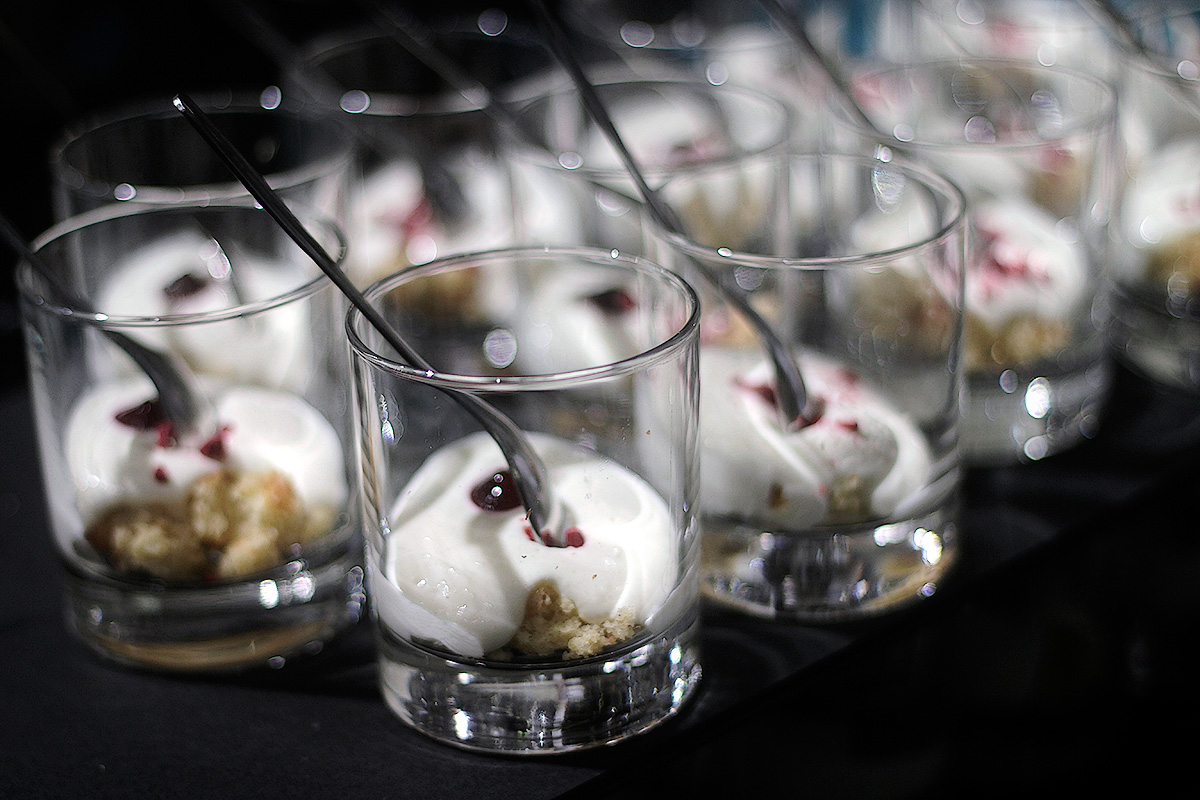Gastro, a three day catering and food exhibition held at Messukeskus, was certainly a strange venue to be sampling the possible future of Finnish school food. Nestled between a cooking competition with tens of chefs in full white regalia (including the hats) and catering stalls, was Fazer’s ideas for potential change in school food. Kindly, we were invited to sample it and hear about their plans for the industry.
Finnish school legislation guarantees a well-balanced meal for each pupil every school day, in which the objective is to maintain and improve pupils’ health, and to support the ability of learning. This meal is provided from pre-primary and basic education until the completion of upper secondary school. A good school meal is therefore seen as an investment in the future, that also supports learning about health, nutrition, table manners, and participation in school activities.
This level of support has existed since 1948, when Finland became the first country in the world to serve free school meals. Although school catering had existed in Finland from the beginning of the 20th century, 1948 is acknowledged as the year when it became universal.
Mervi Mikkola, Fazer’s Sales Manger, comes to ask how our meal is, and I reply with enthusiasm, “It’s hard to imagine that school food can taste this good!” Mikkola is quick to get the practicalities out of the way. “The raw material cost of that meal was eighty cents: in Finland, the cost of raw material must be under one euro.” I enquire, “Is Fazer providing a lot of the food in the area?”, and Mikkola replies, “Fazer are working in sixteen municipalities, ranging from primary, secondary, and upper secondary.” Asking more about why the food tastes the way it does, she explains that the recipes are derived from surveys and student satisfaction, and created by their culinary team.
Until the beginning of the 60’s, school food consisted mostly of soups and porridges, with children bringing bread and milk to supplement a fairly unsubstantial meal. This changed throughout the 70s, when frozen and processed foods were introduced, along with more vegetables. In the 1970s, school menus often served new food products that had yet to make it into the common household, such as rice and spaghetti. Many children also learned to eat grated root vegetables, salad, and fruit at school.
Legislatively, the provision of food is within the Basic Education Act, where is stipulates that pupils attending school must be provided with a properly organised, supervised, and balanced meal, free of charge, every school day. Plans are created for pupil welfare at the municipal level, which includes the arrangement of school meals, as well as health and nutrition standards, which are guided by the National Nutrition Council in Finland.
School meals account for 8% of the total for education costs per pupil, and approximately 830,000 people are entitled to a free school lunch each day. Speaking to Lilli Jyräs, the Head Chef, it was obvious that the matter is important: she serves 550 people per day in her school restaurant in Pitäjämäki. “Ingredients are the key… we have problems with salt, so it is kept low. Simple, good cooking, with real root vegetables (not processed foods) – when you know what to do with the ingredients, it makes the difference.”
The food is sourced from Fazer’s food producers, which consists largely of Finnish root vegetables. Jyräs continues, “The price is a little higher than regular school food, but it’s very close to the price. We want to show that you can also do something good with the money if you know what you are doing and love cooking… that is perhaps the biggest issue. Grumpy, old cooks. Attitude is important, and if someone is willing to learn, you can improve their skills.”
We continue on the issue of attitude when it comes to school food, as I comment that people must expect school food to be bland, given that is is provided and cheap. “In schools we want to show them that it’s something we want to do for kids, not something we have to do. We want kids to come in, enjoy their lunch, the atmosphere, and someday it is going to be like that, perhaps even for my grandchildren,” remarks Jyräs. This consideration also continues in to the food sources used and the environmental impact. “In cooking, it’s not as common to use the expensive parts of the meat anymore. It’s more about using the whole animal etc, and that’s something we have to start thinking about. Otherwise, we won’t have a planet for coming generations. It’s something everyone should think about.”
As we sample the food that costs eighty cents a head, it’s hard not to imagine that it’s way of the future for Finnish school food. It tastes good, its visually appealing, and ticks all the boxes when it comes to dietary requirements. The provided school lunch is an incredible feat of the education services in Finland, and one that makes all those people who didn’t grow up receiving a hot meal at school each day a little bit envious.
“We want to make the world a better place, at least for the school lunch.” – Lilli Jyräs
Fazer Gastro Menu, 2016
Red cabbage and date salad
Crunchy vegetable salad
Grandma’s cucumbers
Bean salad
Vinaigrette, yoghurt sauce
Chicken pate, root vegetables and potato stew
Spelt and swede risotto
Organic focaccia.
Seed crisp-bread
Crisp-bread
Beetroot hummus and margarine.
Further information can be found at:
Finnish National Board of Education: http://www.oph.fi/english
Statistics Finland: http://tilastokeskus.fi














